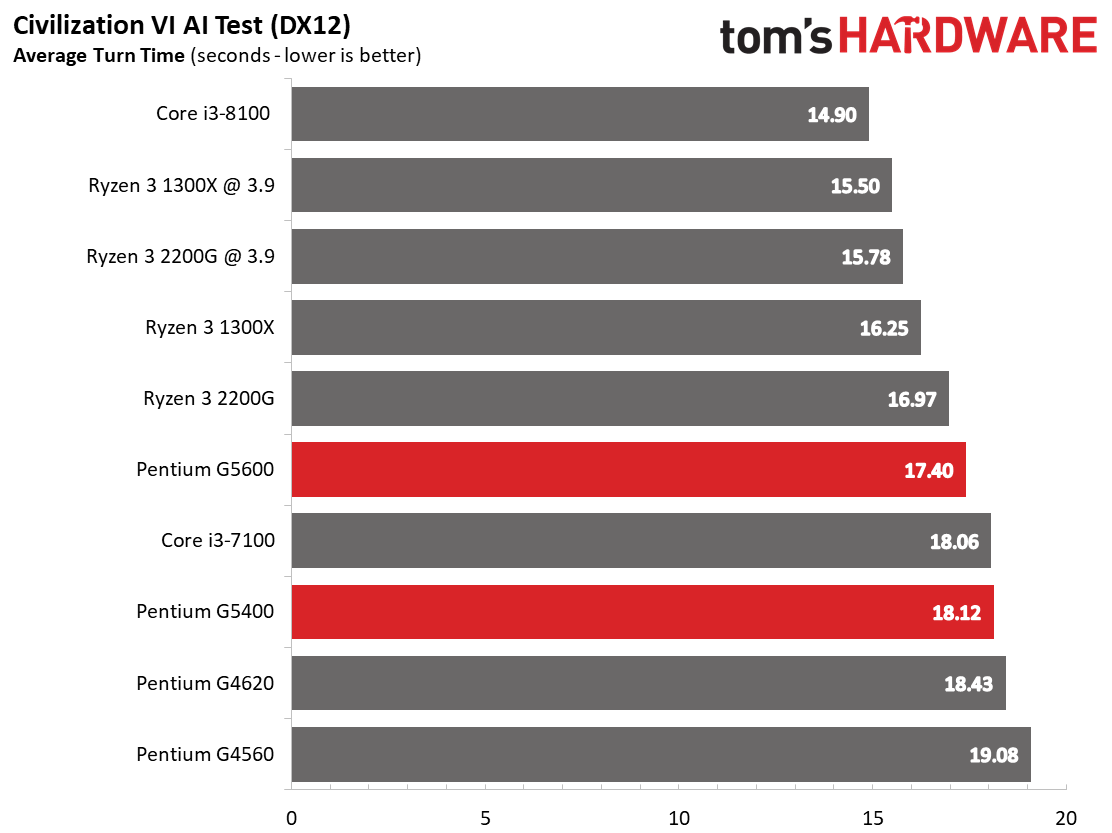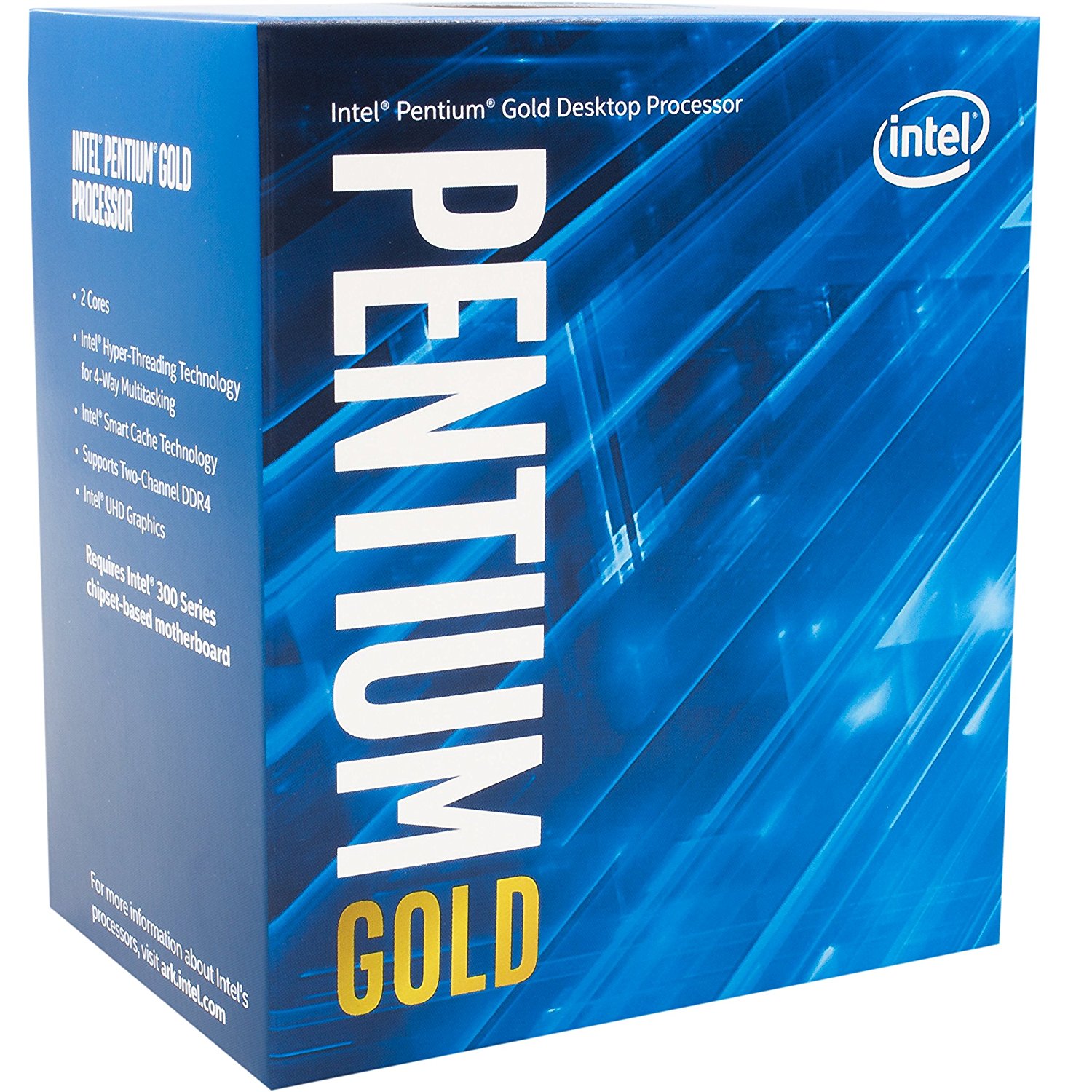Intel Pentium Gold G5600 And G5400 Review: Four Threads Under $100
Why you can trust Tom's Hardware
Civilization VI Graphics & AI, Dawn of War III
Civilization VI AI Test
Civilization VI's AI test measures CPU performance in a turn-based strategy game and tends to favor per-core performance, which is a mixture of IPC throughput and frequency.
Intel's Pentium models were bested by the stock Ryzen 3 2200G, though it's interesting that the Pentium Gold G5600 slid past last generation's Core i3-7100.
Civilization VI Graphics Test
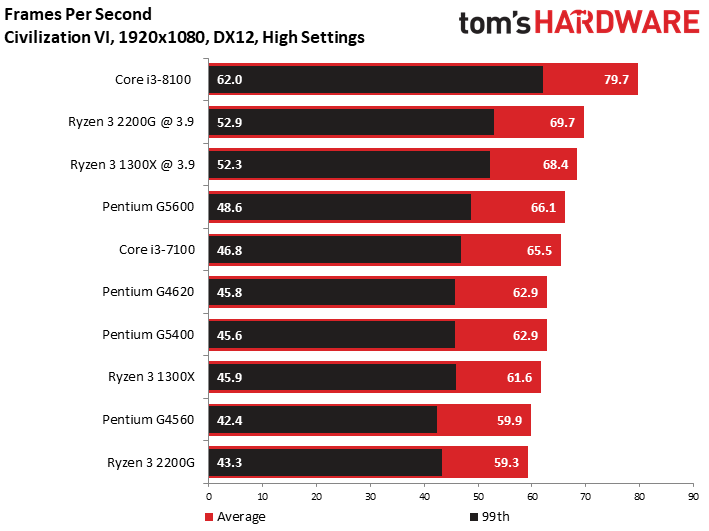
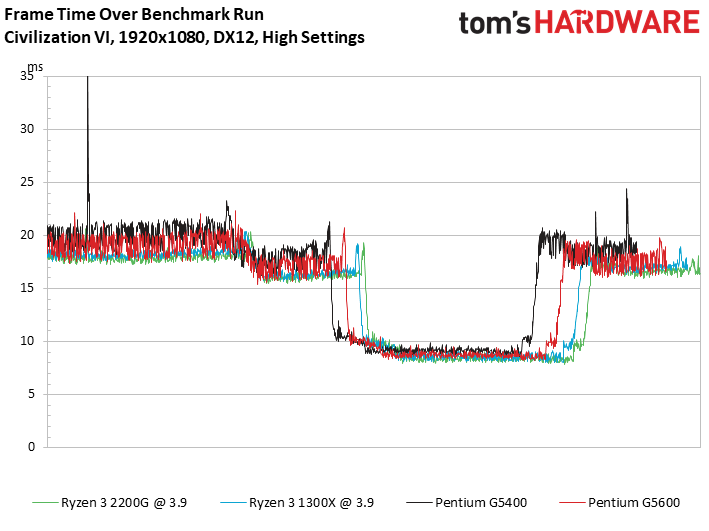
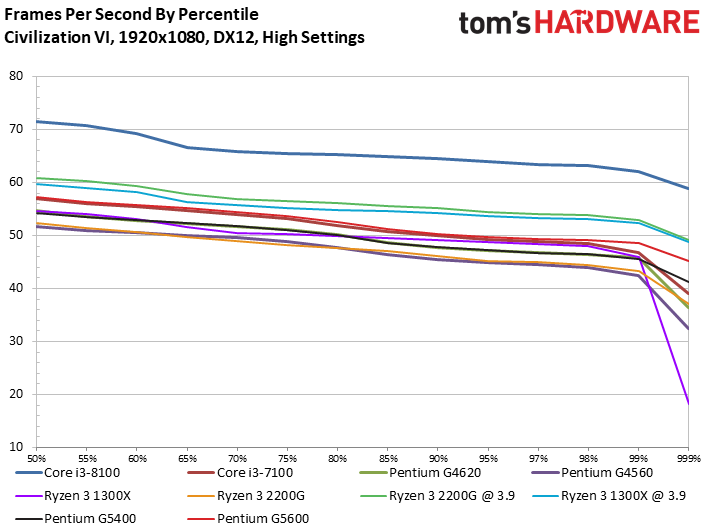
The Core i3-8100 landed way out front. However, its $117 price tag is also way higher than any of the competing models.
At stock clock rates, the Pentium Gold G5600 led our more value-oriented test samples. Once we began overclocking, though, Ryzen 3 2200G jumped out ahead of the G5600.
As an aside, Ryzen 3 1300X features two quad-core CPU complexes tied together with AMD's Infinity Fabric. The company disables two cores in each CCX, yielding four active cores across the processor. In contrast, Ryzen 3 2200G employs one fully active CCX, so it doesn't suffer the same latency penalty that comes from communicating across the fabric. We know from past tests that this latency negatively affects gaming performance, so it was no surprise to find the 2200G beating the 1300X in certain titles at the same 3.9 GHz frequency.
Warhammer 40,000: Dawn of War III
Warhammer 40,000: DoW III's benchmark scales well with execution resources, though aggressive clock rates also provide a big benefit.
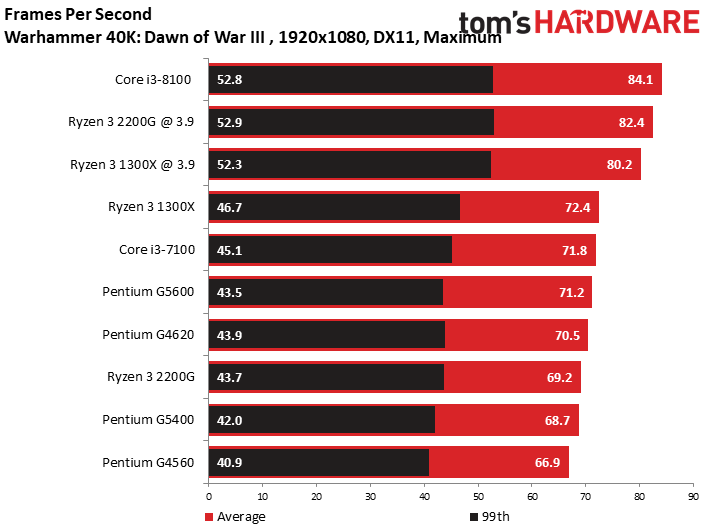

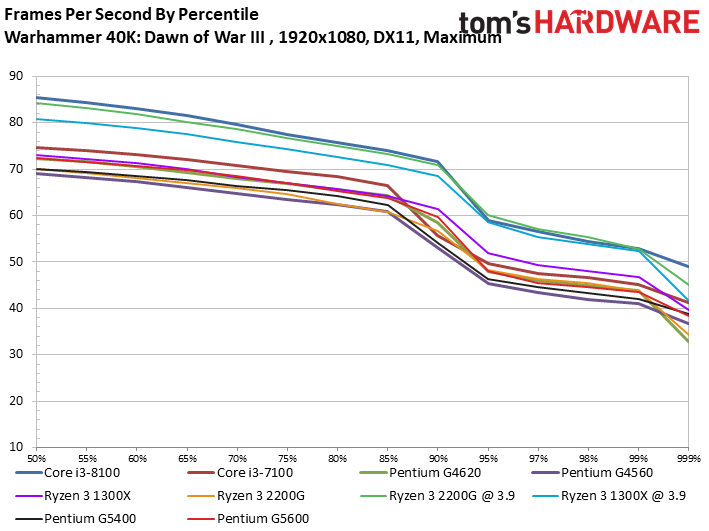
While the Pentium Gold G5600 delivered solid performance at its price point, Intel's G5400 only trailed by 2.5 FPS. That's not a bad trade-off for $30 in savings.
Get Tom's Hardware's best news and in-depth reviews, straight to your inbox.
MORE: Best CPUs
MORE: Intel & AMD Processor Hierarchy
MORE: All CPUs Content
Current page: Civilization VI Graphics & AI, Dawn of War III
Prev Page VRMark, 3DMark & AotS: Escalation Next Page Far Cry 5, GTA: V & Hitman
Paul Alcorn is the Editor-in-Chief for Tom's Hardware US. He also writes news and reviews on CPUs, storage, and enterprise hardware.
-
alchemy69 So you free admit in the first sentence that these chips are for people looking to build a sub-$500 system and so in the test rig you pair it with a GTX 1080?Reply -
logainofhades Reply21170547 said:So you free admit in the first sentence that these chips are for people looking to build a sub-$500 system and so in the test rig you pair it with a GTX 1080?
That is to show only CPU performance. You remove the GPU as a potential bottleneck. Benchmark review 101. -
TCA_ChinChin I think Intel did well in improving their pentium lineup. However, it would have been nice to see some more "real-world" examples like the pentium paired up with a gt-1030 and the r3-2200g with its built in graphics. Although testing without a GPU bottleneck will show absolute CPU performance differences (which is good), having some data more in context with the actual market segment of the product is also beneficial.Reply -
salgado18 I think the fact that they user a powerful GPU for CPU tests to remove bottlenecks should be in caps, bolded, in its own box. Every CPU review someone brings that up.Reply -
techy1966 Good review thanks. Using a good graphics card is a good way to show the CPU performance but it would have also been good to see all the CPU's also use their built in graphics chips. Which would have shown just how weak Intel's onboard graphics really is when compared to a AMD chip with built in graphics.Reply
For those that want to add a cheap graphics card to a low end Intel CPU system it will work well but if you do not want to do that then AMD's 2200G & 2400G CPU's are the only way to go if you want decent graphics performance on a tight budget. -
Paul Alcorn Reply21170900 said:Good review thanks. Using a good graphics card is a good way to show the CPU performance but it would have also been good to see all the CPU's also use their built in graphics chips. Which would have shown just how weak Intel's onboard graphics really is when compared to a AMD chip with built in graphics.
For those that want to add a cheap graphics card to a low end Intel CPU system it will work well but if you do not want to do that then AMD's 2200G & 2400G CPU's are the only way to go if you want decent graphics performance on a tight budget.
Here ya go, the Intel model isn't the same, but honestly it doesn't matter. Same UHD Graphics 630.
https://www.tomshardware.com/reviews/amd-ryzen-3-2200g-raven-ridge-cpu,5472.html
-
Nintendork When the 2200G APU (an i5 6600~) is at $89 you must be beyond blind to buy any intel cpu at that price bracket.Reply -
1_rick Reply21171365 said:When the 2200G APU (an i5 6600~) is at $89 you must be beyond blind to buy any intel cpu at that price bracket.
You can get the 2200G from Micro Center for $79, so it's even more off-balance. And that's been their online price for a while now, not just their in-store-only special. In light of that it seems like the G5400 is something you just should not get at all unless you really can't afford the extra $20 (Micro Center has the G5400 for $59) or you hate AMD. -
alchemy69 Reply21170631 said:21170547 said:So you free admit in the first sentence that these chips are for people looking to build a sub-$500 system and so in the test rig you pair it with a GTX 1080?
That is to show only CPU performance. You remove the GPU as a potential bottleneck. Benchmark review 101.
21170755 said:I think the fact that they user a powerful GPU for CPU tests to remove bottlenecks should be in caps, bolded, in its own box. Every CPU review someone brings that up.
I am well aware of the justification of this method but, imho, it is a nonsense metric. The raw power of the chip can easily be benchmarked with synthetics. Running game benchmarks with a vastly overpowered GPU is merely exchanging one bottleneck for another. What are you really measuring? How much this CPU bottlenecks the GPU in a given game. And who exactly is that information going to be useful to? If I'm reading the review of a new car I don't expect to see a discussion of how fast it could go if it was being towed by a Lambourghini.
